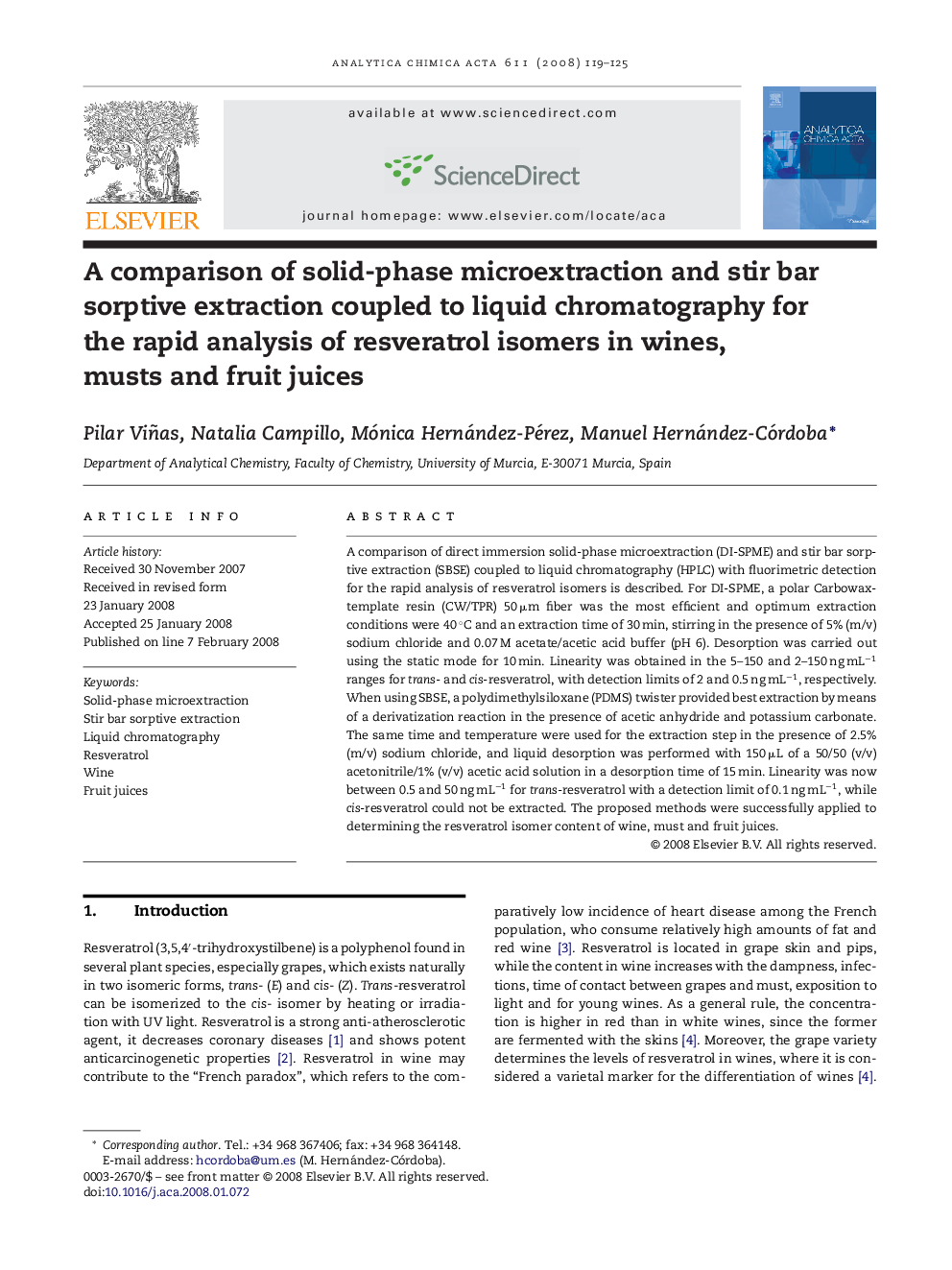| Article ID | Journal | Published Year | Pages | File Type |
|---|---|---|---|---|
| 1169274 | Analytica Chimica Acta | 2008 | 7 Pages |
A comparison of direct immersion solid-phase microextraction (DI-SPME) and stir bar sorptive extraction (SBSE) coupled to liquid chromatography (HPLC) with fluorimetric detection for the rapid analysis of resveratrol isomers is described. For DI-SPME, a polar Carbowax-template resin (CW/TPR) 50 μm fiber was the most efficient and optimum extraction conditions were 40 °C and an extraction time of 30 min, stirring in the presence of 5% (m/v) sodium chloride and 0.07 M acetate/acetic acid buffer (pH 6). Desorption was carried out using the static mode for 10 min. Linearity was obtained in the 5–150 and 2–150 ng mL−1 ranges for trans- and cis-resveratrol, with detection limits of 2 and 0.5 ng mL−1, respectively. When using SBSE, a polydimethylsiloxane (PDMS) twister provided best extraction by means of a derivatization reaction in the presence of acetic anhydride and potassium carbonate. The same time and temperature were used for the extraction step in the presence of 2.5% (m/v) sodium chloride, and liquid desorption was performed with 150 μL of a 50/50 (v/v) acetonitrile/1% (v/v) acetic acid solution in a desorption time of 15 min. Linearity was now between 0.5 and 50 ng mL−1 for trans-resveratrol with a detection limit of 0.1 ng mL−1, while cis-resveratrol could not be extracted. The proposed methods were successfully applied to determining the resveratrol isomer content of wine, must and fruit juices.
